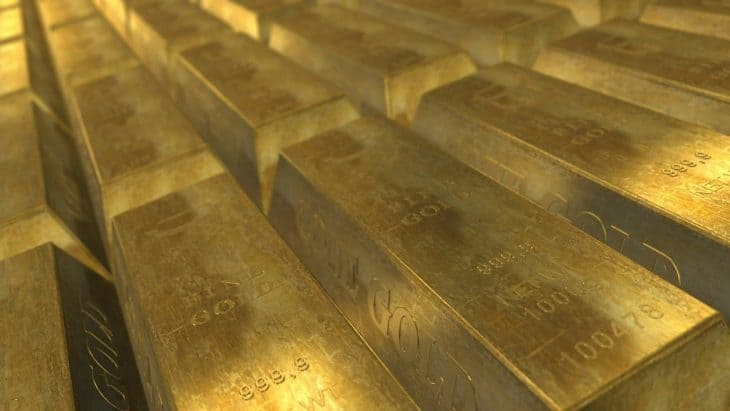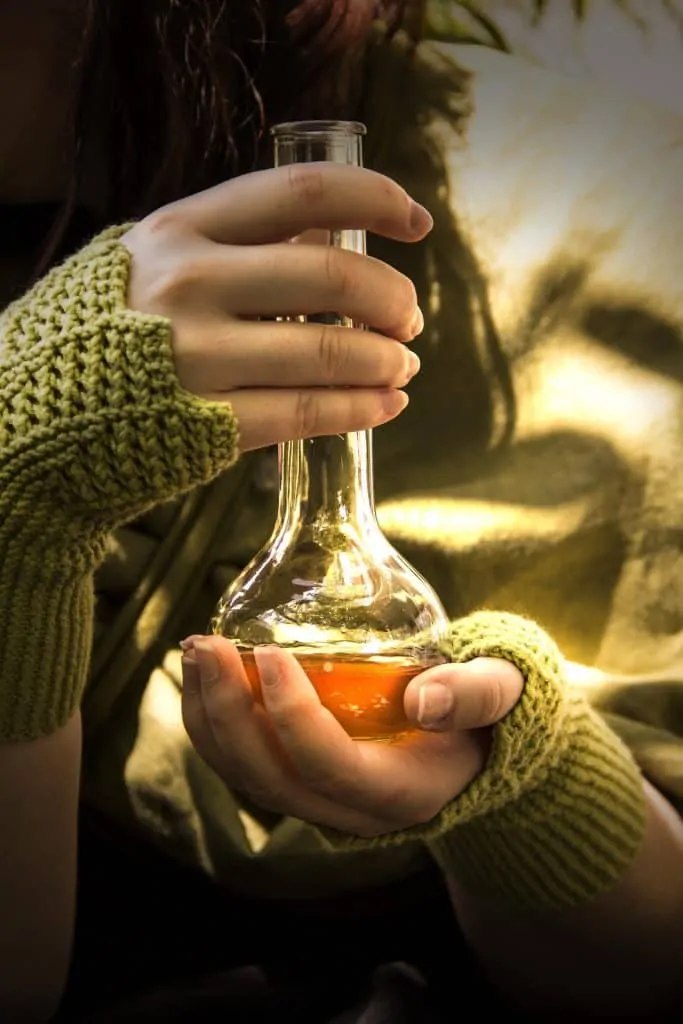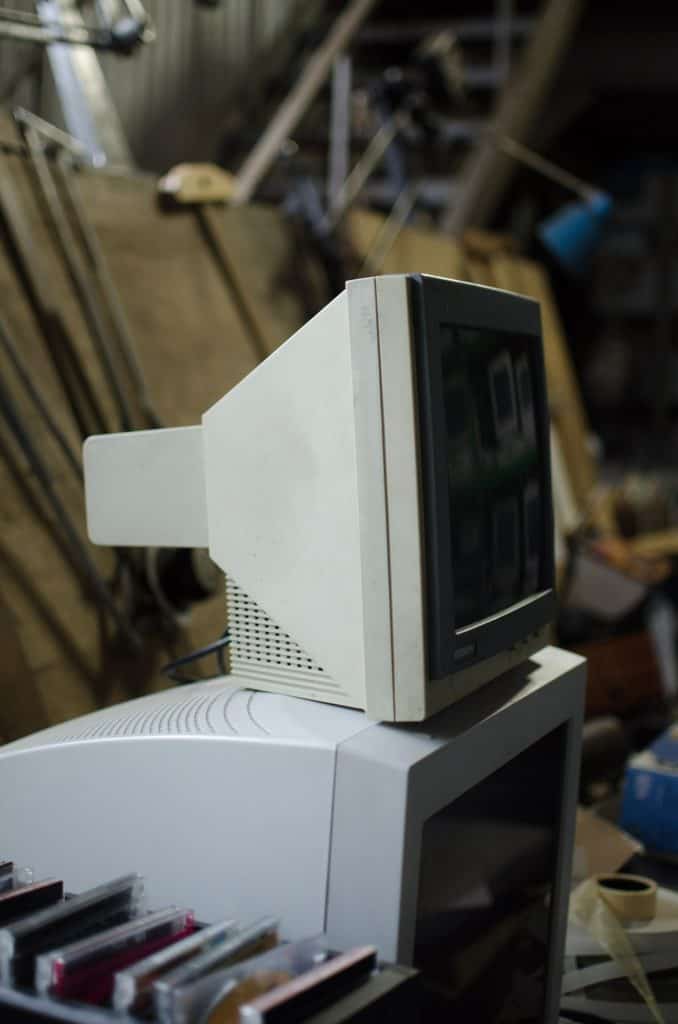
Gold has always been a symbol of luxury and the elite. Historically, men have fought wars and conquered for gold – but now, it’s in our phones and even our food. These facts about gold will let you know more about this precious metal sought by many and eaten by some.
- Pure gold is so soft, you can mold it by hand.
- Gold came from outer space.
- The melting point of gold is 1,064.18°C.
- Gold boils at 2,850°C.
- Edible gold is $15,000 per pound.
- Gold takes up 0.003% of the Earth’s crust.
- Gold is a noble metal with the chemical symbol Au and atomic number 79.
- The atomic weight and atomic mass of gold is 196.96657 u.
- Au comes from the Latin word for gold, aurum (shining dawn).
- Gold has been found in all seven continents.
- Carat weight ranges from 10, 12, 14, 18, 22, or 24 carat. The higher the number, the greater the purity.
- “Solid gold” must have a minimum weight of 10 carats.
- “Pure gold” must have a carat weight of 24, (though there it still has trace amounts of copper).
- It is not chemically reactive – gold does not rust or tarnish.
- The global gold production goes 50% to jewelry, 40% to investors, and 10% to the industry.
- Silver is actually rarer than gold, but gold has far more value.
- Fool’s gold is a real thing – pyrite is an element that looks exactly like gold.
- Native American tribes believed that the ingestion of gold would allow humans to levitate.
- Gold is so malleable that a quarter-sized piece can be worked into a 100 sq ft sheet (as big as the area covered by 50 people, standing close together.)
- Astronaut helmets’ visors are coated in extra-thin gold (0.000002 inches) that reduces glare and heat from direct sunlight.
The ocean holds 20 million pounds of gold.

Gold in the ocean waters is so dilute that it would be like looking for sugar grains in a gallon of unstirred coffee. Gold ores can also be found in the depths of the seafloor, but these deposits are encased layers upon layers of rock. Currently, there is no efficient way to retrieve these gold deposits from the ocean.
If your jewelry itches, it’s not pure gold.
Gold is not a reactive metal, which is why it never rusts. If you’re having sensitivities from your gold jewelry, it is likely that some other metal has been mixed with it.
The gold presently circulating in the market has been around since 1910.
They say that old is gold – but gold is old, too. Around 75% of the gold in the market today has been extracted from over a century ago.
The Olympic gold medals awarded in 1912 were made entirely from gold.
The International Olympic Committee requires a minimum of 6 grams of gold for its gold medals with around 92.5% silver.
The world’s largest gold bar weighs 250 kg.
Manufactured by the Mitsubishi Materials Corporation, this gold bar now costs over 11 million U.S. dollars ($11,714,767.5).
In the 14th century, drinking molten gold and crushed emeralds were used as a treatment for the bubonic plague.

During the devastating plague that wiped out 60% of the European population, one of the strange cures was this emerald-gold concoction. Whether or not it was effective has not been confirmed, but the fact that only 40% of the population survived the Black Plague is telling enough.
The Incas referred to gold as the “tears of the sun.”
The Incan civilization was known for worshipping the sun. Their fixation with gold was not for luxury, but a tribute to their spiritual connection with the sun.
In one hour, the world pours more steel than it has poured gold since the beginning of recorded history.
One of the more interesting facts about gold is how rare and timeless it is – every piece you get has seen enough action in the world since the early 1900s.
The Greeks thought that gold was a dense combination of water and sunlight.
The Ancient Greeks thought so because gold was often found in water.
As of 2009, it has been estimated that humans have mined around 190,040 tonnes of gold.
Two-thirds of this amount has been mined since the 1950s.
South Africa produced the most gold in history.

Almost half the gold ever mined in the world came from Witwatersrand, South Africa.
There could be gold on Mars, Mercury, and Venus.
Scientists believe that gold is formed from supernovae explosions. All the gold we have on Earth is just an accumulation of the particles from these explosions. As such, it is highly possible that other planets and celestial bodies have gold deposits, too.
There’s an asteroid near Earth that holds 20 billion tons of gold.
Psyche 16 is a nearby asteroid near Earth which NASA has been studying. Surprisingly, they discovered that Psyche’s various metals are worth $10,000 quadrillion. A probe is set to examine the asteroid further in 2022.
A gold nugget found in the earth can be 3 to 4 times as valuable as the gold it contains because of its rareness.
Large natural gold nuggets are considered rarer than diamonds. Nuggets are gold fragments broken off from an original lode (the gold deposits embedded in fissures).
The first use of gold coin currency was in Lydia in 6th century BC.
These coins produced during the reign of Croesus were made from electrum, a gold-silver alloy found in the region’s rivers. The coins showed an image of a lion or bull on the face and a seal on the other side.
Gold can be created from other elements.

The lengthy, dangerous process requires nuclear reactions and is so expensive that you’d spend a fortune on creating just a tiny amount.
80% of the Earth’s gold is still in the ground.
There are 52,000 tonnes of unmined gold worth US$2 trillion.
Our bodies contain 0.2% of gold.
Each strand of hair may contain traces of 14 different elements including gold. Blood also contains trace amounts of gold.
Earthquakes turn water into gold.
Move aside, Jesus. The vibrations from earthquakes stir up gold deposits from fissures and the water, which eventually gathers to form solids or ores.
Gold grows on trees.
Money may not grow on trees, but gold does. Australian researchers discovered that the Eucalyptus tree has gold content in its leaves. Eucalyptus roots can reach over 130 feet underground for water. Since gold deposits are found in water wand underground, the Eucalyptus tree saps microscopic gold particles that transfer to its leaves through photosynthesis.
Old PC’s have more gold content than actual gold ore.

One of the more surprising facts about gold: More gold is extracted from a ton of old personal computers than from 17 tons of gold ore!
3 Olympic swimming pools can hold all the gold ever mined in the world.
All the gold ever mined so far can fit in three 164 x 82 feet pools, 6 feet deep.
Six ten-billionths of the Sun is gold.
Poets and musicians weren’t exaggerating when they made all that art about the golden sun. About 0.0000000006 of the sun’s mass consists of gold atoms.
Fear Of God? More like fear of gold.
Aurophobia is the fear of gold because of its appearance or what it represents, such as power or death.
F1 engines are built with gold.

McLaren’s iconic F1 engines have approximately 16 grams of gold used in each car.
Gold is medicinal.
Gold has a lot of uses beyond luxury and investment. In medicine, gold is valuable in treating/possibly curing conditions such as cancer, HIV, and rheumatoid arthritis.
Cancer medication mostly has side effects, but scientists are devising an anticancer drug with gold particles instead of platinum to minimize the side effects.
For HIV, researchers tested a gold-based drug on monkeys infected with an HIV-like virus. The results showed that the auranofin was able to shrink the virus cells.
Liquid gold has proven to reduce joint swelling for those suffering from rheumatoid arthritis.
All the gold ever mined on Earth can fit into a 68ft cube.
That’s about as tall as a 5 story building.
US$40 million’s worth of gold has been recovered from old iPhones.
Apple recovered 2,204 pounds of gold worth US$40 million from broken iPhones in 2015.
⅕ of all the government-owned gold in the world is underneath London.

Underneath the Bank of England on Threadneedle Street are vaults that hold 5,134 tonnes of gold.
Switzerland has the most gold per capita in the world.
At nearly four ounces per person, Switzerland has the most rounded out gold reserves relative to its population.
Gold is the most popular precious metal for investments.
Gold is the most consistently bought precious metal for investment — 46% of global investors chose gold products, just behind savings accounts (78%) and life insurance (54%).
The 1848 California Gold Rush is one of the most significant economic events in history.
The discovery of gold nuggets in Sacramento Valley caused a rush of miners seeking gold. A total of $2 billion worth of precious metal was extracted from the area during the Gold Rush, which peaked in 1852.
Gold and copper are the only non-white metals.
Gold is the only metal that is naturally yellow or “golden”. Other metals may change color, but only after they have oxidized or reacted with other chemicals.
Gold is used to color glass.

In medieval stained glass, red was a rare color. This is because extremely rare and expensive gold particles were needed to create the red tint used by craftsmen.
Gold rings lose 6 mg from its surface every year.
Although usually a symbol of endless love, gold rings actually lose 0.12 mg of its surface with each week of wearing it. Metal abrasion and friction causes a ring to “shed” and leave tiny particles on everything you touch.
Was this page helpful?
Our commitment to delivering trustworthy and engaging content is at the heart of what we do. Each fact on our site is contributed by real users like you, bringing a wealth of diverse insights and information. To ensure the highest standards of accuracy and reliability, our dedicated editors meticulously review each submission. This process guarantees that the facts we share are not only fascinating but also credible. Trust in our commitment to quality and authenticity as you explore and learn with us.


